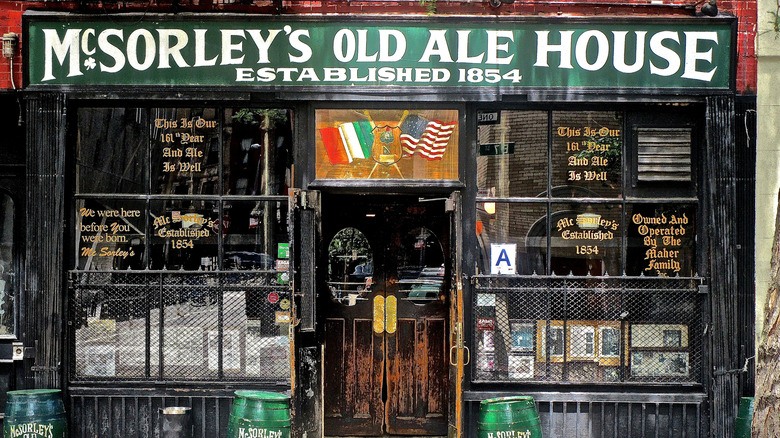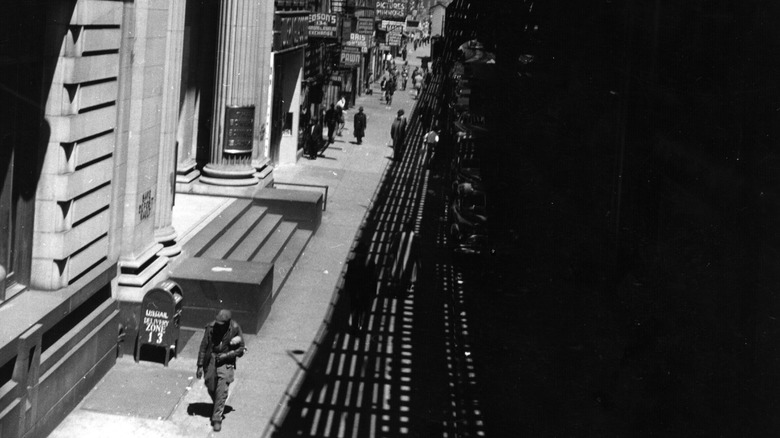The Bizarre Reason 19th Century New Yorkers Held Their Breath In Bars
The Morgue. The Burnt Rag. Chick Tricker's Flea Bag.
According to Eater New York, the city's 19th-century dive bars had some pretty lurid names. Yet the antics inside could be a whole lot more so, ranging from shady deals to cocaine-laced whiskey to actual murders.
And as pointed out by author Christine Sismondo via Smithsonian Magazine, the one rule was to leave social class at the door — meaning businessmen, bosses, boxers, drifters, immigrants, con artists, gamblers, laborers, musicians, and criminals could all mingle happily over beer or rum.
Understandably, it could get dicey at times, especially over in The Bowery neighborhood. For instance, the (decidedly gory) Billy McGlory's Armory Hall had a reputation for pickpocketing, fighting, and gang violence (via The Gilded Hour). And Infamous New York describes the gruesome theatre shows at Kit Burn's Sportsmen's Hall where terriers would fight rats for sport.
Of course, most of the gin mills of yesteryear have long since disappeared. These include everything from grimy 19th-century saloons to prohibition speakeasies, whose regulars were described by The New York Daily Mirror as "derelicts who stumble through the last days of their lives in a continual haze of 'Bowery Smoke'" (via Smithsonian Magazine).
That said, tales of the oddball barroom antics of old Manhattan still linger on. And one of the strangest has to be the breath-holding bravado of barflies in Bowery during the 1800s.
19th century New York's weird drinking habit
The Bowery is New York City's oldest thoroughfare. It's a chic hangout nowadays, but in the 1800s, it was scoundrel central — partly because the former Third Avenue Elevated train service passed through, coughing out ash and visiting ne'er-do-wells seeking the nearest spot to get soused.
In their early days, Bowery saloons were so scratchy and unrefined that they didn't even have glasses. So what did people drink from? According to Smithsonian Magazine, bar owners just hooked rubber tubes up to beer barrels.
You'd then pay three cents to slurp from them until you had to come up for air. So what did customers do? They learned the technique of circular breathing so that they could drink their fill. David Blaine, eat your heart out.
You might unearth similar tales of a more merry, mischievous (and maladjusted) past in the handful of historic haunts that have survived, including McSorley's Old Ale House. A recent loss was Bridge Café, which closed its doors in 2020 after 126 years. Once a pirate bar, the story goes that it had a female bouncer so fearsome, she bit the ears off troublesome customers with sharpened teeth and kept them in jars (via NYC The Official Guide).
In other words, it wasn't all can-can girls in those New York hole-in-the-walls — it was pretty perilous. But for sheer anarchy, bravado, and a chance to clank glasses with both bankers and poker sharks, you couldn't really beat the 19th-century dive bar — even if you did need to hold your breath to get your money's worth.

